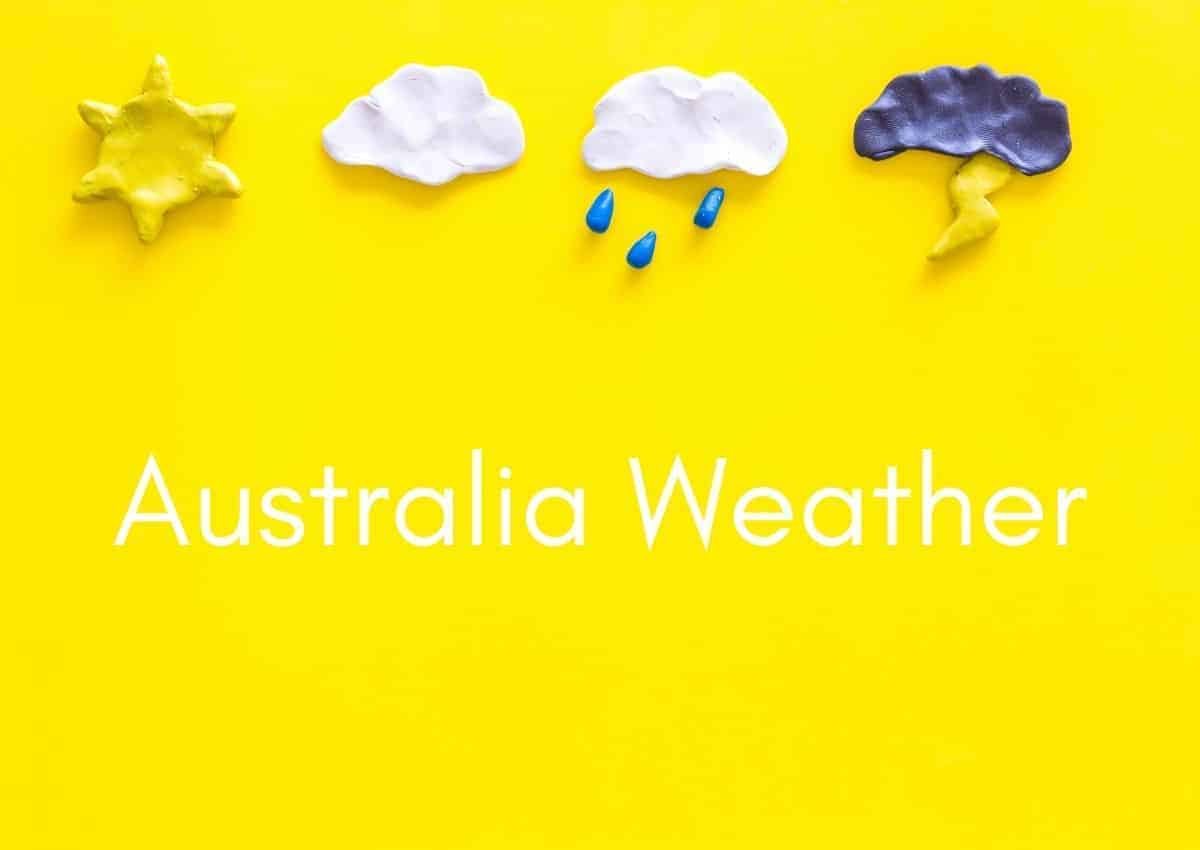Your daily Australia weather forecast can be seen below. See the daily horoscope here.
Australia Weather forecast for Tuesday 13 July 2021:
Here you will find latest weather forecast for various parts of Australia to know what to expect when leaving the house. Please remember that during this difficult time it is imperative to stay healthy and keep your immune system boosted. So stay up to date with the weather so that you can make sure to dress accordingly.
Sydney
Max temperature: 20°
Mostly sunny.
Melbourne
Max temperature: 15°
Partly cloudy.
Brisbane
Max temperature: 21°
Mostly sunny.
Perth
Max temperature: 19°
Showers. Possible storm.
Adelaide
Max temperature: 16°
Showers increasing.
Hobart
Max temperature: 13°
Partly cloudy.
Canberra
Max temperature: 13°
Partly cloudy.
Darwin
Max temperature: 33°
Sunny.
Weather data provided by the Bureua of Meterology, Australia. For a detailed Australia weather forecast of your area, click here.
The Australia Weather Forecast can be followed daily by you saving this link in your bookmark for daily updates. Be the first to know what the weather is going to be like so that you can be prepared! In order to keep your immune system boosted we’ve shared a list of suggestions to stay healthy here.
Australia is a not a small country, meaning that the climate can be quite different from one region to the next. Australia experiences four seasons across the country.
SUMMER: DECEMBER – FEBRUARY
Summer in Australia falls between the months of December and February. It brings sunny, warm days that are best spent at one of the country’s gorgeous beaches. The tropical north is in the midst of its wet season (November to April), which brings heavy rains and tropical storms to Darwin, Broome, Cairns and the Whitsundays.
AUTUMN: MARCH – MAY
It can still be wet and stormy in the tropical north, so aim for late in the season if you’re heading up there.
WINTER: JUNE – AUGUST
Widely known for its red outback and golden sand beaches, many visitors are surprised to learn that a white winter is common in Australia. The Australian Alps, in the south of the country, are home to great ski fields for winter sports and après enthusiasts.
SPRING: SEPTEMBER – NOVEMBER
Australia’s spring is characterised by sunny days and cool nights. Jacarandas and wildflowers are in bloom, creating a spectacular display of colour in many of the country’s cities, such as Canberra and Sydney, as well as in regional areas around Perth.
THE ‘WET SEASON’: NOVEMBER – APRIL
The wet season in Australia’s north is characterised by very hot days, high humidity, monsoonal rains and possible cyclones, but it’s not without its drawcards. Many areas in Kakadu may be closed due to risks of flood, but you can still see the thundering waterfalls of the area on a scenic helicopter flight. In Tropical North Queensland, monsoon troughs and storms are more common, but it very rarely rains all day and you’ll usually enjoy sunny days with a storm in the afternoon or evening.
THE ‘DRY SEASON’: MAY – OCTOBER
Head to the Top End during the dry season for clear blue skies, warm days and cool nights. Many visitors find the best time to come is at the end of the wet season or beginning of the dry season, when everything is still lush and green. In Tropical North Queensland, the daily temperatures are lower, but still reach the high 20s (low 80s) and rarely drop below 17 degrees Celsius (62 degrees Fahrenheit). Rainfall is low and you can expect gorgeous sunny days, making it the most popular time to visit the region. The ocean is free of marine stingers during this time, so you can swim almost anywhere without nets or suits for protection.











